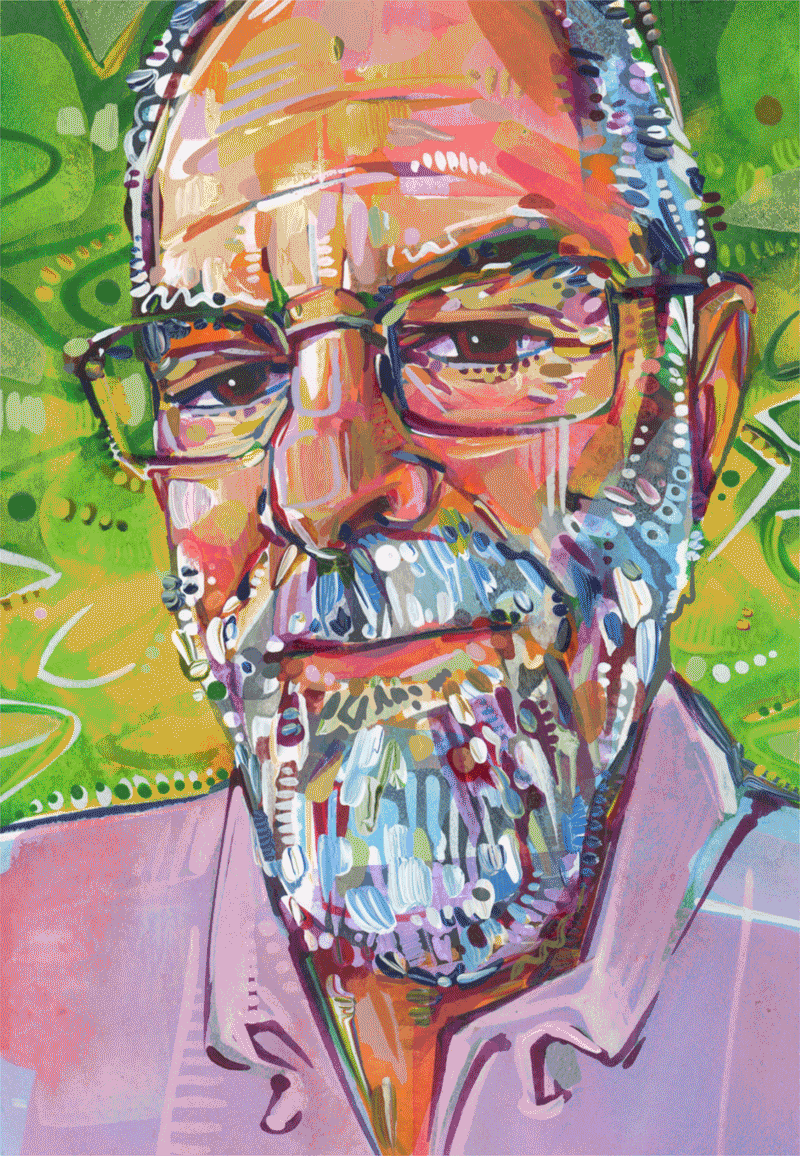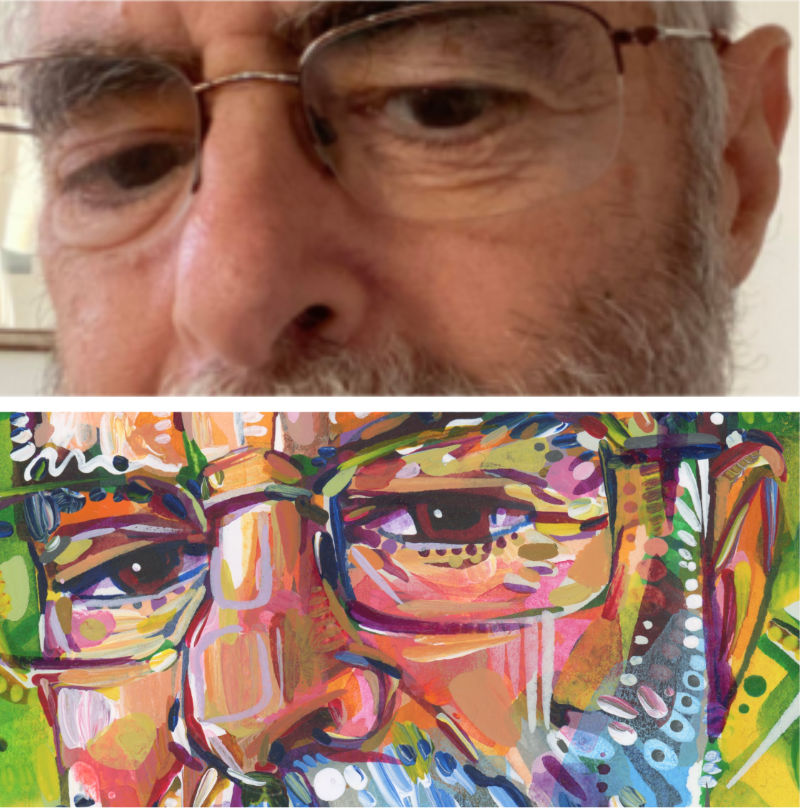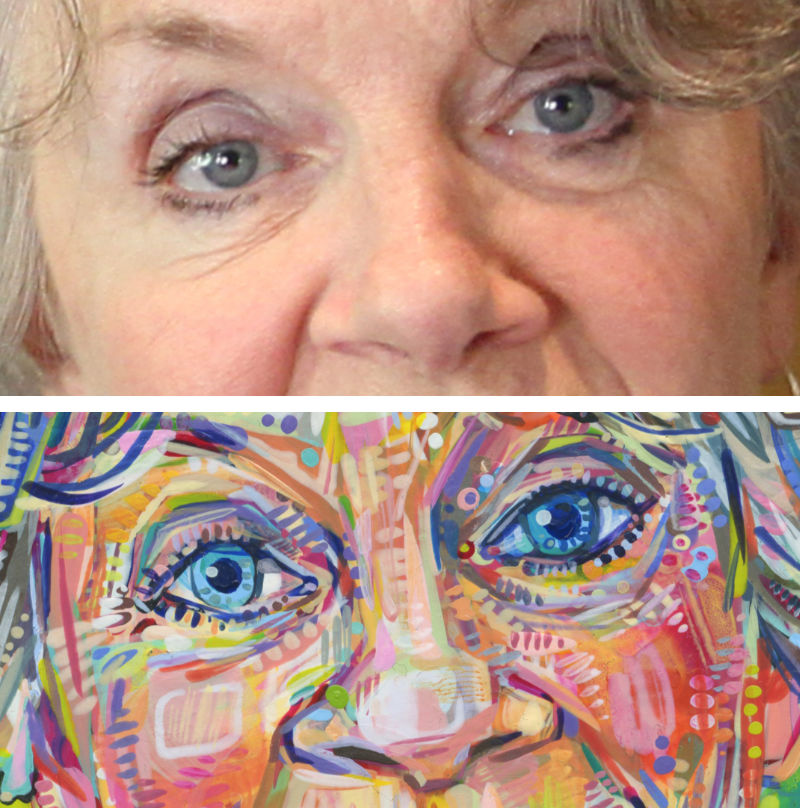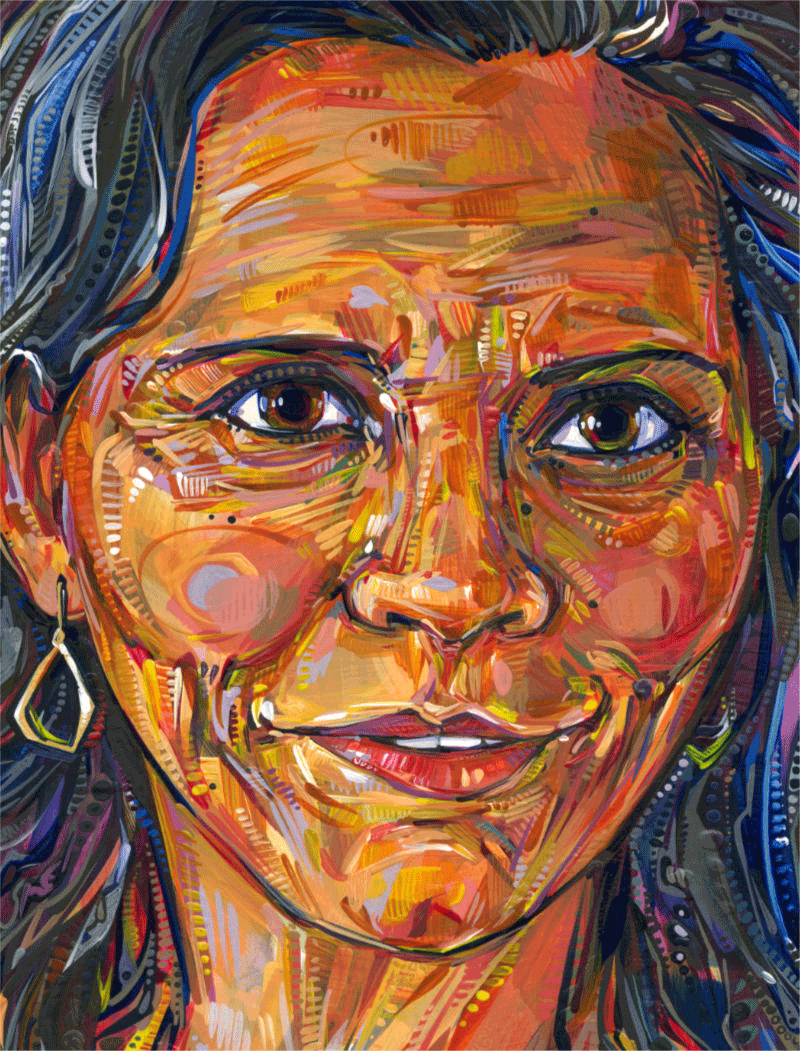Blog / 2023 / Painting the Eyes in a Portrait
July 27, 2023
For Part 3 of my blog series explaining portrait painting, we’re moving beyond the bones/cartilage of Part 1 and Part 2 and finally getting into soft tissue.
For eyes, shape and symmetry obviously matter, but the secret is in the pupil.
Its size can make your subject seem more or less likable, because, when a person is interested in something or someone, their pupils dilate to allow more light in—to allow them to see the desirable thing more clearly.

You might notice it in your loved ones, but it’s most obvious in fashion magazine faces and billboard models where the pupil has been enlarged as part of the photo-editing process. Because, as it turns out, ad agencies have long capitalized on this quirk of human perception. They understand that if a person is attracted to an object or another person that they are looking at, that person becomes more appealing to observers. The engaged person is the engaging one, making people are more inviting-looking when their pupils are larger.

This is also why darker-colored eyes tend to be described as “warm” whereas lighter ones get called “icy” or “steely.” The pupil’s size is much more easily readable in a light-colored eye, so a person’s love for you (or lack thereof) is easier to discern.

Like in this light-eyed portrait. I upped the pupil size as I painted because, in the source photo I chose for this portrait, the subject was looking out a window. As you can see in the picture, her pupils are small and less inviting than they might be due to the bright light she’s facing. I corrected her pupils in the portrait, making a painting that might not be true to the moment of our interview but which reflects more fully who the subject is.
Enhancing pupil size in a portrait is one of those little things you can do to up the attractiveness of the subject without altering their features, and, though it may feel like cheating, I like to think of it more like helping your subjects to put their best eyeball forward.

The same goes for the reflection spot in the eye. In a hyperrealist painting, these spots show how the wet surface of eyeballs glisten and often reveal the source of light by reflecting the shape of a lamp or window. In any style of portrait—from Medieval to Manga—these little white shapes give the likeness that sparkle of life.
The size, shape, and location of these reflection spots lend the face different feelings, so it’s important not only to include it, but to sparkle it up just so. In the very subtly animated image above, it’s just the reflection spots on the eyes that change, but the whole feel of the face shifts with those points of light.
UPDATE
August 12, 2023
These are the rest of the articles in the portrait series: where to start and painting the nose and ears, mouth, teeth, skin, signifiers, and breath and movement.
Maybe this post made you think of something you want to share with me? Or perhaps you have a question about my art? I’d love to hear from you!
To receive an email every time I publish a new article or video, sign up for my special mailing list.
If you enjoyed this post, Ko-fi allows you to donate. Every dollar you give is worth a bajillion to me!



